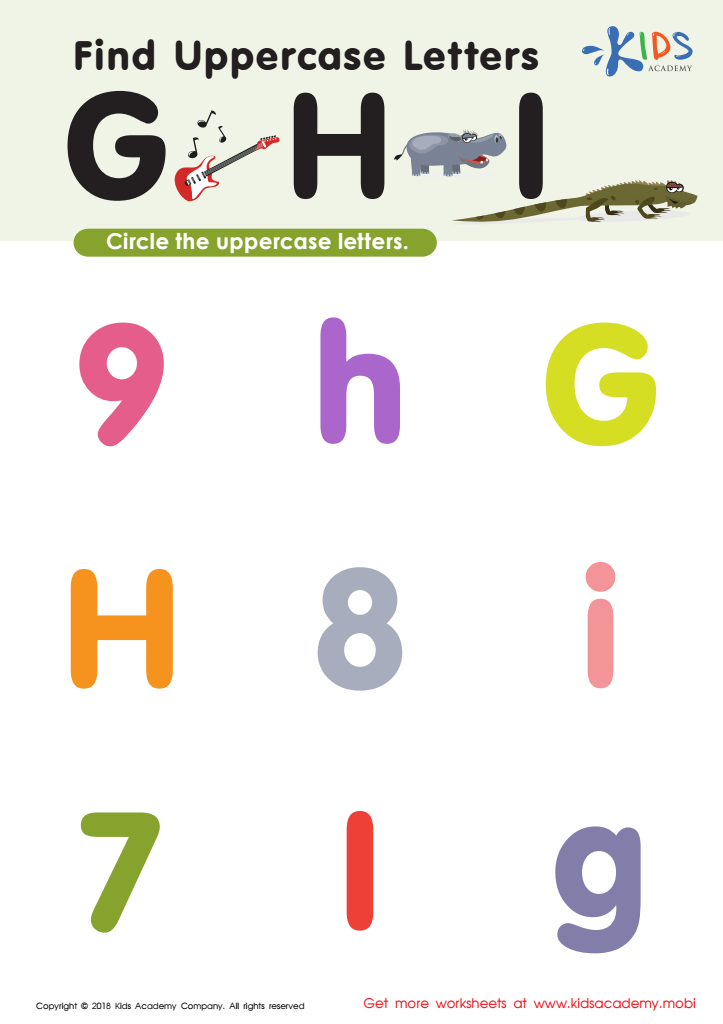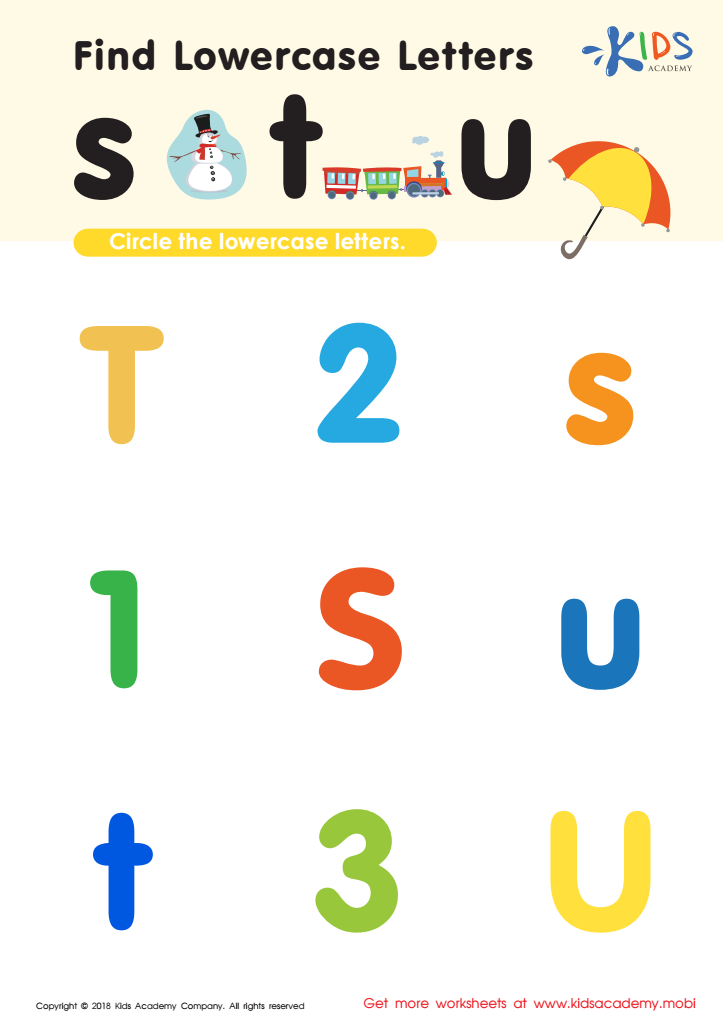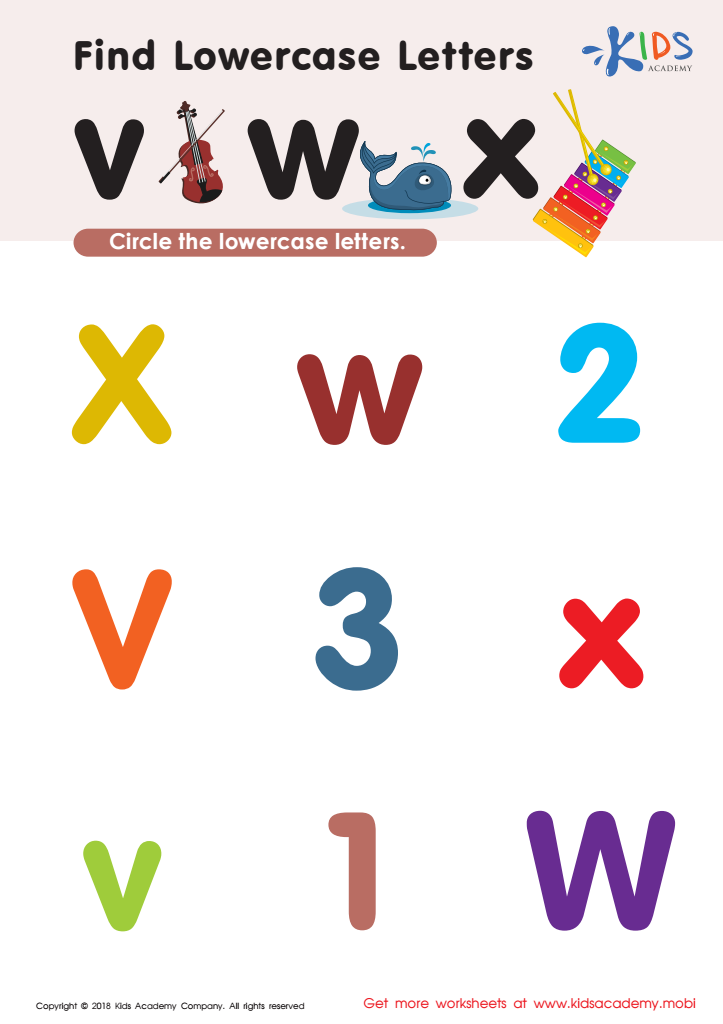Alphabet familiarity Normal Letter Recognition Worksheets for 5-Year-Olds
6 filtered results
-
From - To
Discover the joy of learning with our Alphabet Familiarity - Normal Letter Recognition Worksheets for 5-Year-Olds. Designed to inspire young minds, these colorful and engaging worksheets help children recognize both uppercase and lowercase letters. Each sheet combines fun activities such as tracing, matching, and coloring, making letter recognition a breeze. Ideal for preschool and kindergarten students, these resources foster foundational literacy skills. Build your child’s confidence and school readiness with our thoughtfully crafted materials, perfect for both classroom and at-home learning. Start your child’s educational journey today with our Alphabet Familiarity Worksheets!


Find Uppercase Letters G, H, and I Worksheet


Find Uppercase Letters Worksheet


Find Uppercase Letters J, K, and L Worksheet


Find lowercase Letters s t u Worksheet


Find Uppercase Letters A, B, and C Worksheet


Find Lowercase Letters v w x Worksheet
Alphabet familiarity and normal letter recognition are crucial milestones for 5-year-olds, as they lay the foundation for early literacy development. Parents and teachers should care deeply about these skills because they are integral to a child's ability to read and write, core competencies that influence overall academic achievement and lifelong learning.
When children recognize letters accurately and understand their corresponding sounds, they develop phonemic awareness, which is critical for decoding words effectively. This skill enables them to read fluently, comprehend text, and communicate effectively through writing. Early proficiency in these areas often predicts future success in reading, which in turn is linked to achievements across all subjects, from math to science, as reading is the primary method by which students acquire new information.
Moreover, alphabet familiarity boosts a child's confidence and fosters a love of learning. It enhances their participation in classroom activities and strengthens their ability to follow along with instructions and educational materials. For parents, supporting this development reinforces bonding and creates a positive, literate environment at home, further encouraging a child's educational journey.
In sum, investing time and effort into ensuring children are comfortable with letters and their sounds is vital. It sets the stage for continued academic success, builds essential cognitive skills, and nurtures a lifelong passion for reading and learning.
 Assign to My Students
Assign to My Students















